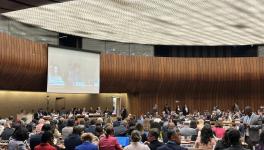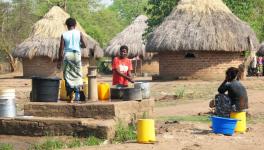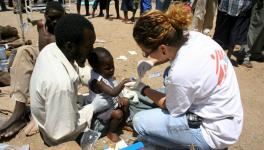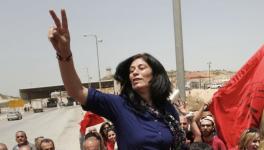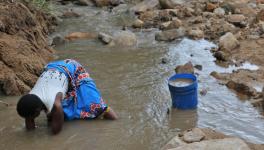75 Years After its Foundation, WHO Struggles For Sovereignty
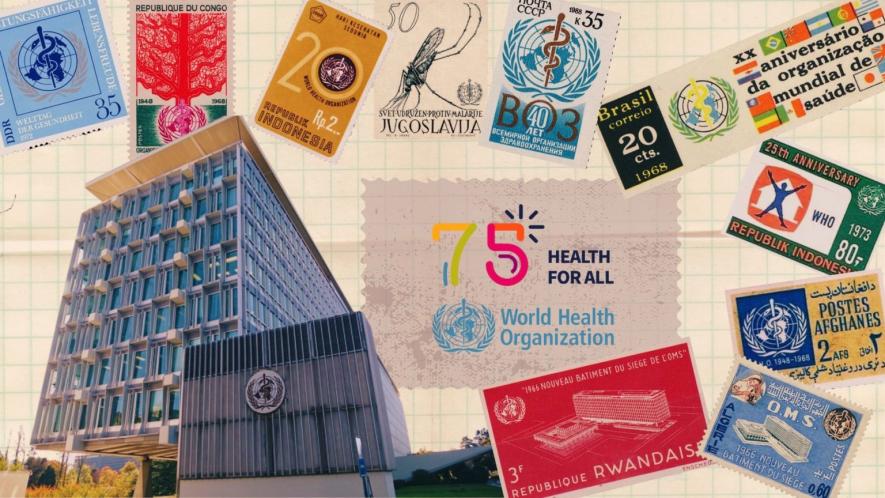
During its existence of nearly seven decades, the World Health Organization (WHO) has been successful in eradicating smallpox, launched the ambitious Alma Ata declaration for primary health care (PHC), and is now leading global efforts to achieve the Sustainable Development Goals. However, its impact has been diluted by the influence of transnational corporations and other global institutions, particularly the World Bank and International Monetary Fund. Neoliberal economics and attacks on multilateralism have created a difficult context for WHO’s work, severely impacting its independent functioning and ability to address dire health needs, especially in resource-poor settings.
Tracing the roots of the World Health Organization and its founding principles
The WHO was established in 1948, but its form and work are a continuation of the League of Nations Health Organization (LNHO). Since the very beginning, its annual decision-making meeting, the World Health Assembly, operated under the principle of “one state, one vote.” This meant that every country was equal regardless of economic or political influence. The spirit was to resolve issues through dialogue instead of majority vote, which can be influenced by factors other than public health needs.
By design, the WHO is not meant to fulfill all the roles in global health or impose penalties. Instead, its effectiveness and success rely on the cooperation and solidarity of its members. A prime example of such collaboration is the successful eradication of smallpox, where countries set aside their differences to work closely with each other and WHO.
The WHO Constitution‘s preamble comprises nine principles, and while the phrase “Health is a state of complete physical, mental, and social well-being and not merely the absence of disease or infirmity” is frequently referenced, the other principles are also noteworthy. They emphasize the fundamental right to health for all people, the significance of equal development in health promotion worldwide, the role of child development and education in achieving a healthy society, the importance of informed public opinion and cooperation in improving public health, and the obligation of governments to provide sufficient health and social measures to safeguard their citizens.
From imperial hygiene to social medicine—and back?
Despite the “one state, one vote” principle, WHO’s decisions have always been influenced by politics inside and outside the organization. Soon after its creation and the beginning of the Cold War, the WHO began to align more closely with US foreign policy. Because of this, between 1949 until the mid-1950s, the Soviet Union and its allies left WHO, leaving what little counterbalance for social medicine becoming nonexistent. This resulted in the WHO essentially reviving an outdated disease-oriented, ‘imperial hygiene’ approach, putting aside social medicine principles. In spite of this, the then-leaders of the WHO remained hopeful that social medicine would make a comeback to the agency’s list of priorities.
In the late 1970s, following the success of campaigns such as smallpox eradication, the WHO was able to revisit its origins. Under the leadership of Dr. Halfdan Mahler, the agency returned to the ideas of social medicine through its Primary Health Care strategy. The strategy aimed to strengthen health infrastructure and support economic and social development, particularly in rural areas.
The ideas were not unlike those explored by the LNHO in 1937, when the organization emphasized the link between health and social advancement during the Intergovernmental Conference of Far-Eastern Countries on Rural Hygiene. In 1978, the Conference on Primary Health Care in Alma Ata, Kazakh ASSR—today’s Kazakhstan—saw all the countries in the world defining a structure for promoting “Health for All”, and addressing health problems in the Global South. The conference produced the Declaration of Alma Ata, which outlines PHC ideals that health movements worldwide still follow: attaining the highest level of health through community participation and a multisectoral approach.
Many governments, organizations, and individuals thought that WHO’s ambitious vision of PHC was unrealistic and impossible to achieve. As early as a year after the Alma Ata conference, they began the process of converting the Declaration’s lofty ideals into practical and measurable technical interventions at a small conference in Bellagio, Italy. This conference was heavily influenced by US policymakers and sponsored by the Rockefeller Foundation, with assistance from the World Bank. The Bellagio conference resulted in the concept of Selective Primary Health Care, with a preference for cost-effective, narrowly focused interventions, which can be easily monitored and assessed. For most of those dedicated to the Health for All approach, this was equal to a counter-revolution.
Financial freeze
At the same time, the WHO’s budget started to dwindle. WHO’s financing was primarily composed of membership fees paid by member countries, which are determined by their population and income. This is the money that is fully flexible for the WHO to use as it deems fit and gives it independence in operations and setting priorities. However, in the early 1980s, the WHA put a freeze on WHO’s budget, i.e. not letting the contribution amount grow in real dollar terms and only adjusting for inflation and exchange rates, which then limited the organization’s funds and ability to operate freely. This happened precisely as the HIV/AIDS pandemic was beginning to emerge. Another decision followed in 1993 to take out inflation and currency adjustments out of the equation, which makes the WHO’s budget slowly fall in real terms and worsens the agency’s already precarious financial situation. The actual value of each country’s flexible contribution to the budget has slowly declined in the following years, forcing the WHO to resort to funding from multilateral agencies or donor nations. The donors decide which programs they want to support and have the option to withdraw funding if they are not satisfied with WHO’s work, heavily compromising its independence. Wealthy donor nations and multilateral agencies such as the World Bank have considerable control over how these funds are used, and establish “disease-oriented” programs, separate from WHO’s programs and exert strong influence on WHO’s policies and decisions.
By the early 1990s, 54% of the WHO’s budget came from earmarked donations or donations from actors other than the organization’s own members. This caused a multitude of coordination and decision making difficulties. Today, this kind of funding makes up more than 80% of the budget, making it almost impossible for the WHO to fulfill its constitutional duties, let alone fight for its own vision.
The WHO tried to resist some pressure from powerful governments and groups, but was rarely successful. The International Code of Marketing of Breast-Milk Substitutes and the Framework Convention on Tobacco Control were a couple of notable wins in WHO’s battle against multinational companies. At the turn of the new millennium, the WHO started collaborating more closely with the World Bank and has since taken part in activities which effectively promote commodification of medicine, privatization of health care, and free trade policies. This has done a great deal of damage to the health service infrastructures in developing countries, not to mention diverting them from their path of social and economic independence.
Building a stronger WHO
There have been some attempts by the WHO leadership to increase funding by the governments. But it has not worked. Many members and multilateral agencies pay only lip-service to the idea of strengthening the WHO’s position as the central authority in global health governance. For example, a pandemic treaty is currently being negotiated at the WHO which could bring about significant changes to international health practices and global health governance. But parallel processes are undermining the WHO. The Pandemic Fund, a G20 and World Bank initiative, has the WHO as only an observer in its policy-making. Another initiative at the IMF, aimed at tackling climate crisis and pandemic preparedness, was not created with health or WHO needs in mind. In February, these two institutions, with the Rockefeller Foundation’s support, convened at Bellagio to plan an alternative global health system without WHO’s participation.
On its 75th anniversary, let us reflect on the significance of the WHO and the kind of organization we need to go forward. We should take this opportunity to evaluate past actions and take steps to ensure that the WHO can serve its purpose. Otherwise, we risk the WHO falling further under the control of powerful donors and international financial institutions, taking us further away from achieving health for all.
People’s Health Dispatch is a fortnightly bulletin published by the People’s Health Movement and Peoples Dispatch. For more articles and to subscribe to People’s Health Dispatch, click here.
Get the latest reports & analysis with people's perspective on Protests, movements & deep analytical videos, discussions of the current affairs in your Telegram app. Subscribe to NewsClick's Telegram channel & get Real-Time updates on stories, as they get published on our website.











